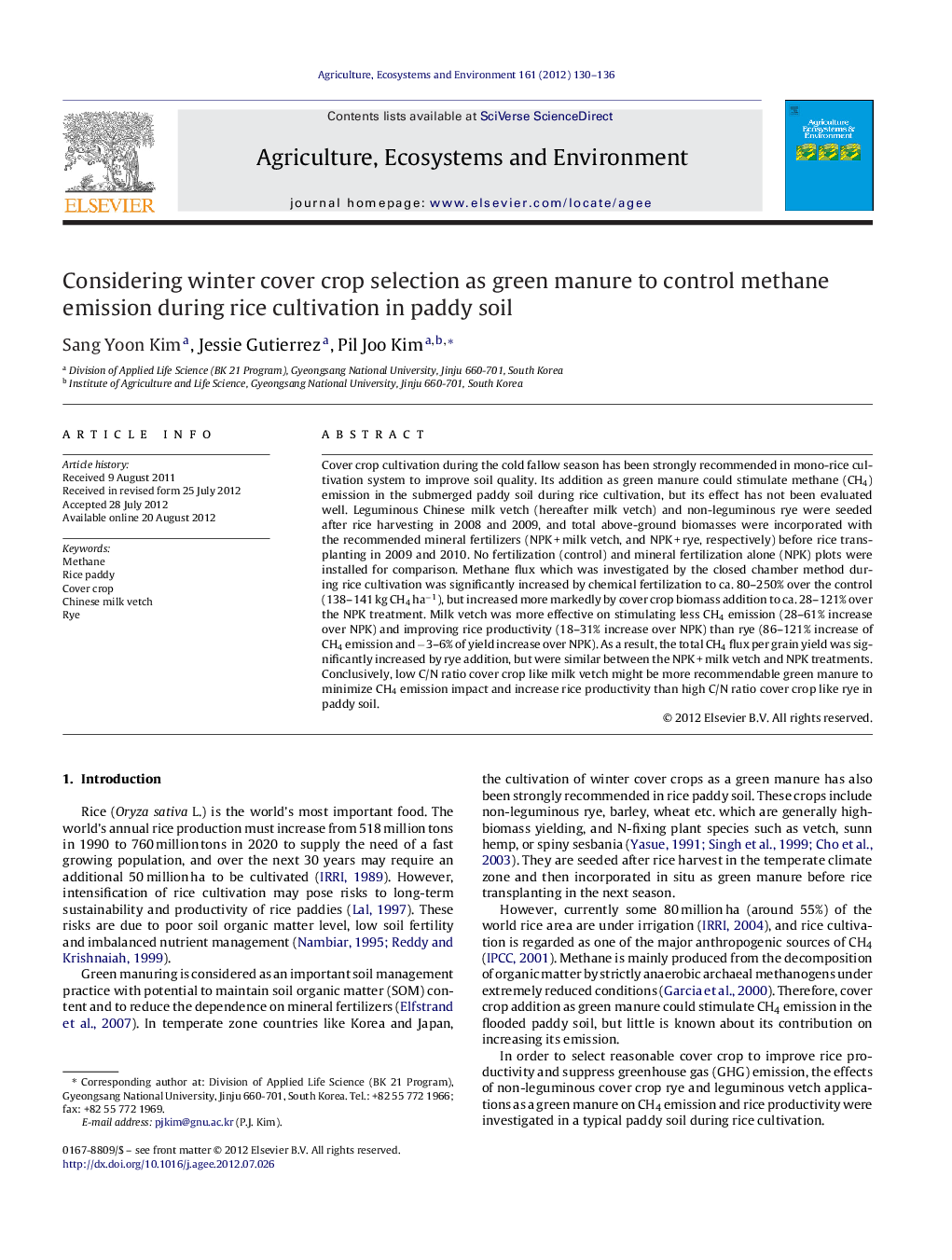| Article ID | Journal | Published Year | Pages | File Type |
|---|---|---|---|---|
| 2414411 | Agriculture, Ecosystems & Environment | 2012 | 7 Pages |
Cover crop cultivation during the cold fallow season has been strongly recommended in mono-rice cultivation system to improve soil quality. Its addition as green manure could stimulate methane (CH4) emission in the submerged paddy soil during rice cultivation, but its effect has not been evaluated well. Leguminous Chinese milk vetch (hereafter milk vetch) and non-leguminous rye were seeded after rice harvesting in 2008 and 2009, and total above-ground biomasses were incorporated with the recommended mineral fertilizers (NPK + milk vetch, and NPK + rye, respectively) before rice transplanting in 2009 and 2010. No fertilization (control) and mineral fertilization alone (NPK) plots were installed for comparison. Methane flux which was investigated by the closed chamber method during rice cultivation was significantly increased by chemical fertilization to ca. 80–250% over the control (138–141 kg CH4 ha−1), but increased more markedly by cover crop biomass addition to ca. 28–121% over the NPK treatment. Milk vetch was more effective on stimulating less CH4 emission (28–61% increase over NPK) and improving rice productivity (18–31% increase over NPK) than rye (86–121% increase of CH4 emission and −3–6% of yield increase over NPK). As a result, the total CH4 flux per grain yield was significantly increased by rye addition, but were similar between the NPK + milk vetch and NPK treatments. Conclusively, low C/N ratio cover crop like milk vetch might be more recommendable green manure to minimize CH4 emission impact and increase rice productivity than high C/N ratio cover crop like rye in paddy soil.
► Green manure application can stimulate CH4 emission during rice cultivation. ► High C/N rye green manure more sharply increased CH4 emission. ► Leguminous vetch is more effective to minimize CH4 emission and improve rice productivity.
